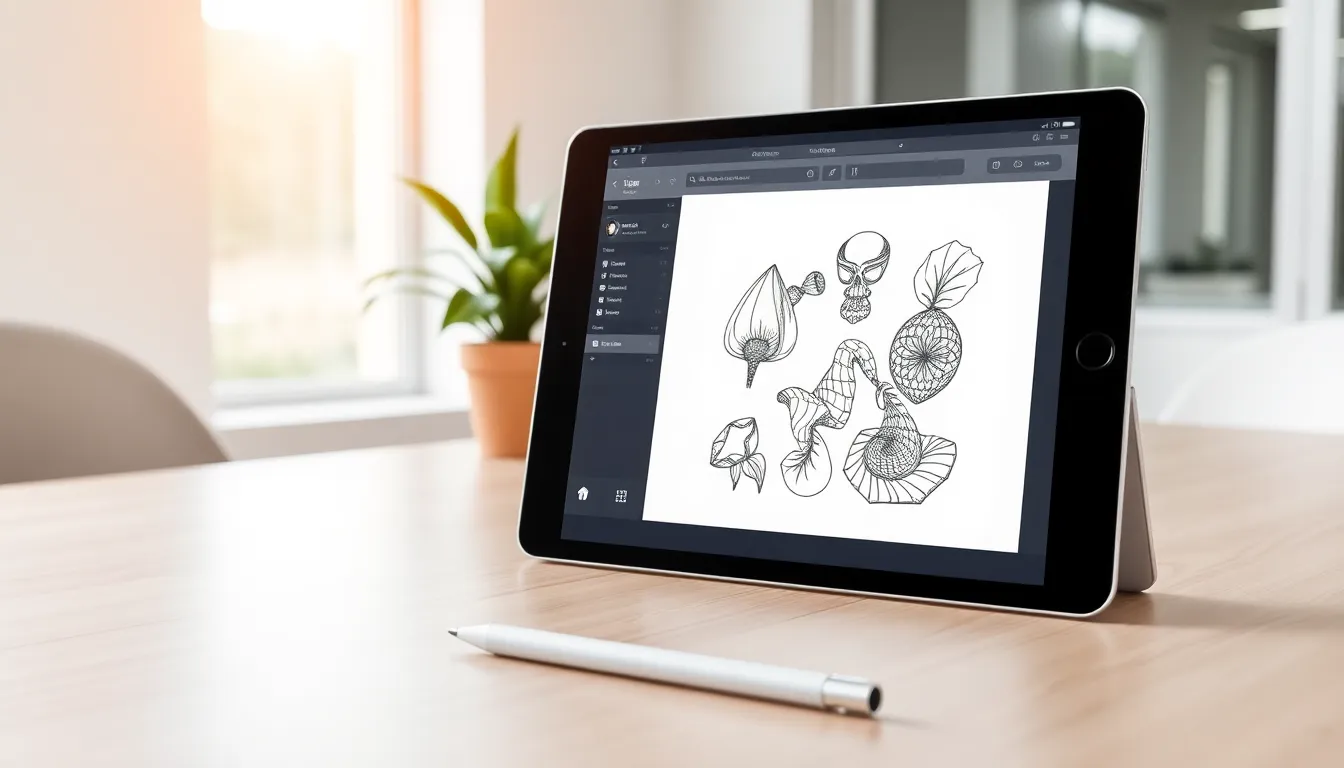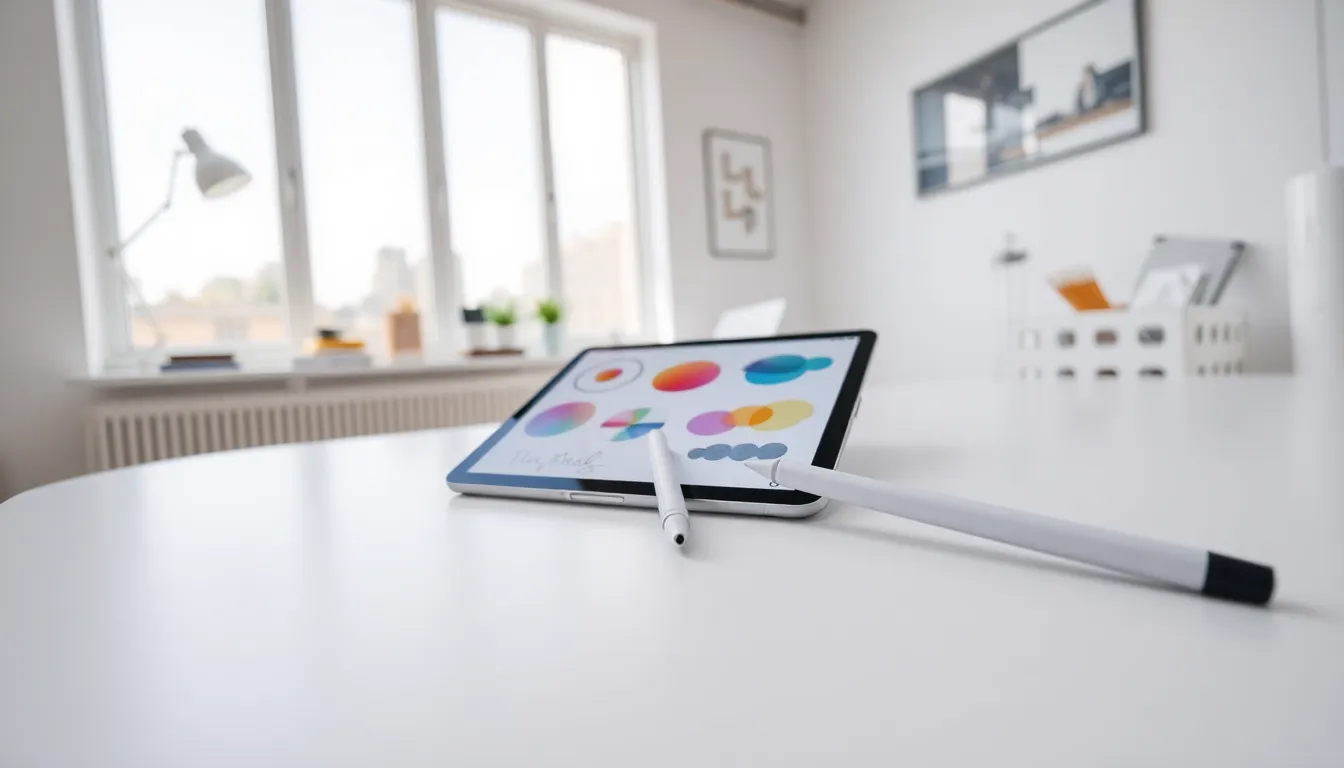In today’s fast-paced world, tablets have become the secret weapon for students aiming to conquer their academic battles. Gone are the days of lugging around heavy textbooks and scribbling notes on crumpled paper. With a tablet in hand, students can access a universe of knowledge with just a tap, all while looking effortlessly cool.
Imagine a device that fits snugly in a backpack, offers endless resources, and even doubles as a gaming console during study breaks. Tablets aren’t just gadgets; they’re the ultimate study buddies. They transform mundane study sessions into interactive learning experiences. So, whether it’s for taking notes in class or binge-watching the latest series after finals, tablets have students covered. Let’s dive into why these sleek devices are the must-have tool for every student ready to elevate their learning game.
Table of Contents
ToggleOverview of Tablets for Students
Tablets play a crucial role in modern education by transforming learning methods. Many students now rely on tablets for accessing digital textbooks and educational apps. Such devices provide portable solutions that reduce the weight of traditional backpacks filled with heavy books. Students benefit from features like note-taking applications, which allow for organized and efficient study habits.
Access to the internet through tablets allows students to explore a vast range of resources beyond classroom materials. Educational videos and interactive content enhance understanding of complex subjects. Moreover, many tablets support various formats, accommodating multimedia projects and presentations with ease.
Entertainment options are also integrated, offering relaxation methods during study breaks. Games, music, and streaming services serve as useful rewards for hardworking students. Tablets promote multimedia learning, accommodating different learning styles through visual and auditory formats.
Innovation in educational technology continues, with many tablets featuring apps specifically designed for student needs. Applications encourage collaboration through shared documents and group projects, allowing students to work together irrespective of location.
Battery life has improved in many newer models, providing all-day use, which supports varied academic schedules. Affordability of tablets has increased, making them accessible to a larger student population compared to previous years. Schools and students alike recognize the importance of integrating tablets into everyday learning, leading to more effective educational experiences.
Benefits of Using Tablets

Tablets provide a variety of advantages that enhance the academic environment for students.
Enhanced Learning Experience
Tablets improve the learning experience by delivering interactive and engaging content. Many educational apps foster collaboration, allowing students to work together on projects anywhere. They support diverse learning styles through videos, quizzes, and simulations, catering to visual, auditory, and kinesthetic learners. Tablets also enable access to a wide range of digital textbooks and online resources. Students can explore subjects deeply without the limitations of a traditional classroom. The ability to use note-taking apps organizes information efficiently, making study sessions more productive. Overall, these features facilitate a dynamic and efficient approach to learning.
Accessibility and Portability
Tablets offer exceptional accessibility and portability, making them an ideal choice for students. Weighing significantly less than traditional textbooks, they fit easily into backpacks. Many students can access coursework anytime and anywhere, enhancing their ability to study spontaneously. Tablets connect to Wi-Fi and cellular networks, providing internet access even outside the classroom. This capability ensures that students can conduct research or complete assignments on the go. Additionally, innovative designs and improved battery life allow for extended use throughout the day. Affordable options make these devices accessible to a larger population.
Popular Tablets for Students
Tablets designed for students combine functionality with portability, catering to diverse academic needs. Several options stand out in today’s market.
Feature Comparison
Apple’s iPad Air boasts a powerful chip, making it suitable for multitasking and handling demanding applications. Samsung Galaxy Tab S7 offers a vibrant display with a DeX mode for seamless productivity. Microsoft Surface Go 2 combines tablet versatility with laptop features, utilizing Windows software for a familiar interface. Amazon Fire HD 10 delivers affordability with solid performance for basic tasks and media consumption. Lenovo Tab P11 provides a robust sound system and optional keyboard, appealing to students focused on media projects. Evaluating these features provides insight into choosing the right tablet based on individual academic requirements.
Pricing Options
Pricing varies significantly among student-friendly tablets. The Apple iPad Air starts around $599, reflecting its premium build and features. Samsung Galaxy Tab S7 is priced at approximately $650, catering to users seeking high performance. Microsoft Surface Go 2 offers a slightly lower entry point at about $400, appealing to budget-conscious students. Amazon Fire HD 10 stands out with a starting price of around $150, making it accessible for many learners. Lenovo Tab P11 typically retails for $250, balancing affordability with solid specifications. Understanding these pricing options aids in making a decision that aligns with both needs and budgets.
Choosing the Right Tablet
Choosing the right tablet involves considering several key factors tailored to student needs.
Operating Systems
Operating systems significantly influence a tablet’s functionality. iOS offers a user-friendly interface and integrates seamlessly with Apple’s ecosystem. Android provides versatility with various brands and models available, allowing customization. Windows, often found on hybrid tablets, excels in multitasking capabilities, appealing to users seeking a laptop-like experience. Each operating system comes with its own set of educational apps. Students should assess how the preferred operating system aligns with their academic requirements.
Size and Specs
Size and specifications play crucial roles in tablet selection. A lightweight design enhances portability for students on the go. Common screen sizes range from 8 to 12 inches, striking a balance between usability and ease of carrying. Storage options vary, typically from 32GB to 256GB, accommodating different media formats and applications. Battery life is another critical aspect; tablets with 8 to 12 hours of use accommodate full day studies. Evaluating these attributes helps ensure the chosen tablet meets the functional needs of students.
Tablets have become indispensable tools for students navigating today’s educational landscape. Their ability to combine learning and entertainment makes them versatile companions in the classroom and beyond. With various models catering to different needs and budgets students can find the perfect device to enhance their academic experience.
As technology continues to evolve tablets will likely play an even greater role in shaping how students engage with content and collaborate with peers. By embracing these devices students can unlock a wealth of resources that support their learning journey and foster a more dynamic approach to education.






